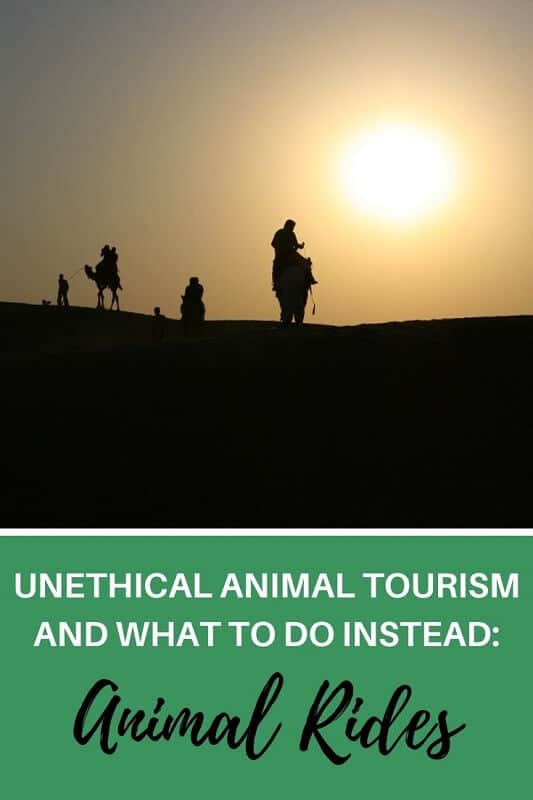Animal rides have been popular among tourists for decades and decades and even today often sold in as a cultural experience. It’s commonly seen as a cultural experience to ride a camel into the Moroccan desert or an elephant through the Thai jungle.
Luckily, the latter is starting to get more and more unpopular among conscious travelers from all over the world as information has spread like wildfire across the internet in the last few years. Still, there are millions of tourists riding elephants and other animals all over the world.
Often, animals are used for work by locals who also ride them from one place to another, something they have done for centuries. Does this make it ok for tourists to go for a ride?
As we talked about in the first article of this series of unethical animal tourism and what to do instead, the care for the animal’s welfare decreases once it becomes a business.
No sane animal would be happy carrying tourists on their back all day while being kept on a leash. Think about it. This is not normal behavior, it is purely done to please our desire to sit on an exotic animal.
Once again, I have partnered up with a great bunch of responsible travel bloggers who share their stories about how they rode an animal during their travels, what they learned, and what you can do instead.
In case you are new to my blog, I will confess, once again, I have gone on several animal rides as well as other unethical animal experiences in the past.
Unfortunately, way too many before I started learning the consequences for the animals. I have ridden an elephant 3-4 times in Thailand and once in India. Also, I rode a camel in Egypt, twice. And again in India.
We can’t change what we have done wrong in the past, but we can change the way we talk about it to others so that they don’t have to make the same mistakes.

Unethical animal tourism and what to do instead: Animal rides
Is it possible to distinguish ethical animal rides from unethical animal rides? According to this article, there are a few things to look for when choosing an animal to ride. Among them, that the animal should look healthy and consider the size of the animal.
However, I’m skeptical. I did that for many years and thought I was being ethical about riding both elephants and camels. However, I often found that the animals didn’t look as fit and healthy once I sat on it.
And let’s be honest. Without any knowledge about the animal, how could I know how much weight was too much weight for an animal? How would I know what the animal had been through to obey when high numbers of unknown people (aka tourists) were sitting on them daily?
There were way too many unanswered questions for me to know if what I was doing was ethical toward the animal or not.
Here are a few examples of animal rides, why they’re unethical, and what to do instead.
Ride a donkey in Santorini
By Alyse from The Invisible Tourist
On my first visit to Santorini over ten years ago, like thousands of other tourists, I rode a donkey up the almost 600 stairs from the port to Old Town. It was “the” thing to do without much thought. Being more of a petite traveler, I was placed on a juvenile donkey.
Around the halfway mark, I noticed the poor donkey was beginning to tire. Despite pushing on through what must have been exhaustion, his little legs couldn’t carry any further and he eventually tripped about two-thirds of the way up, causing me to tumble off.
His owner asked if I was ok and despite hitting my head on the concrete steps, my travel buddy and I said we would continue the rest of the way ourselves. I felt awful – not because I had been hurt, but because it was so clear the donkey was suffering by doing this day in, day out.
This was a huge wake-up call to me about animal welfare in tourism. I didn’t want to contribute any further to the suffering of these lovely animals, or others for that matter.
Ethical ways to help the donkeys in Santorini
Some years later, I revisited Santorini and did the donkeys a favor by catching the gondola up to the Old Town from the port instead. It’s only 5€, the views are just as great and it doesn’t take anywhere near as long to reach the top!
Aside from taking the gondola, you’re able to help these donkeys by supporting charities that stand up for the ethical treatment of these animals. Organizations such as SAWA Santorini & The Donkey Sanctuary work tirelessly to rescue abandoned donkeys, petition local governments for better conditions, provide medical treatment and more.
Before riding a donkey in Santorini, put yourself “in their hooves” for a moment and question whether it’s really worth it.

A large, grown up donkey should not carry more than 50 kilos on its back. This includes harness. Most donkeys in tourism are smaller and less fit than that. With that information, it’s easy to understand that no grown up should ever ride a donkey. Read more about why you shouldn’t ride donkeys in my article here.
Ride a camel in Egypt
By Linn from Brainy Backpackers
On my first trip to Egypt, I visited the pyramids of Giza, as every tourist to Egypt should! What I also did, that I don’t recommend anyone to do, though, is to see the pyramids on camel back. After looking for a camel that looked healthy and well looked after, I clumsily got myself on top of the animal with good help. Only a few seconds after starting the walk, I noticed dried blood running down the camel´s back. To make a long story short, I didn’t enjoy that exotic picture-perfect trip around the Giza pyramids.
Nevertheless, I did ride a camel in a Beduin village later on the same holiday. Also, less than two years later, I found myself riding a camel through the desert in Rajasthan in India. I can’t justify how I did that after that first experience, other than the thought of it as cultural experiences rather than the obvious tourist trap in Giza.
So, why is it unethical to ride camels? Animals that are not well looked after is obvious. Like the one in Giza. But what about a healthy-looking camel in the desert in India or Morocco? There is a lot of contradicting information about camel rides – if it is ethical or not.
Personally, I think that if tourism starts controlling the number of rides an animal is exposed to, it doesn’t matter how “ethical” it is to ride that animal or not. It has become a business, and the animal has lost all its integrity to money and to tourist’s amusement.
Even though locals have used camels for work during centuries and they are domesticated doesn’t mean they should be forced to carry tourists around all day.
How to see camels ethically
Some responsible travel agencies support camel rides in the form of longer desert tours where they work with the locals and ensure the well-being of the animals. On the other hand, PETA advises against all animal rides, including camel rides. They have also documented mistreatment of the camels used in tourism, especially in Giza.
If you do decide to go for a camel ride, all recommendations I have come across informs that it is better for the camels to go on long, preferably overnight tours rather than short trips. The most important thing is that you do your research first. Make sure the tour operator you choose has the right values when it comes to animal tourism and responsible travel. If you have the slightest doubt, it’s probably best to skip it.
Never ride camels at big tourist attractions like Petra and The Great Pyramids of Giza.
A friend of mine in Jordan, offers a great alternative to camel rides as she promotes walking with camels as a way to reconnect with yourself through the deeper connection with the animal.
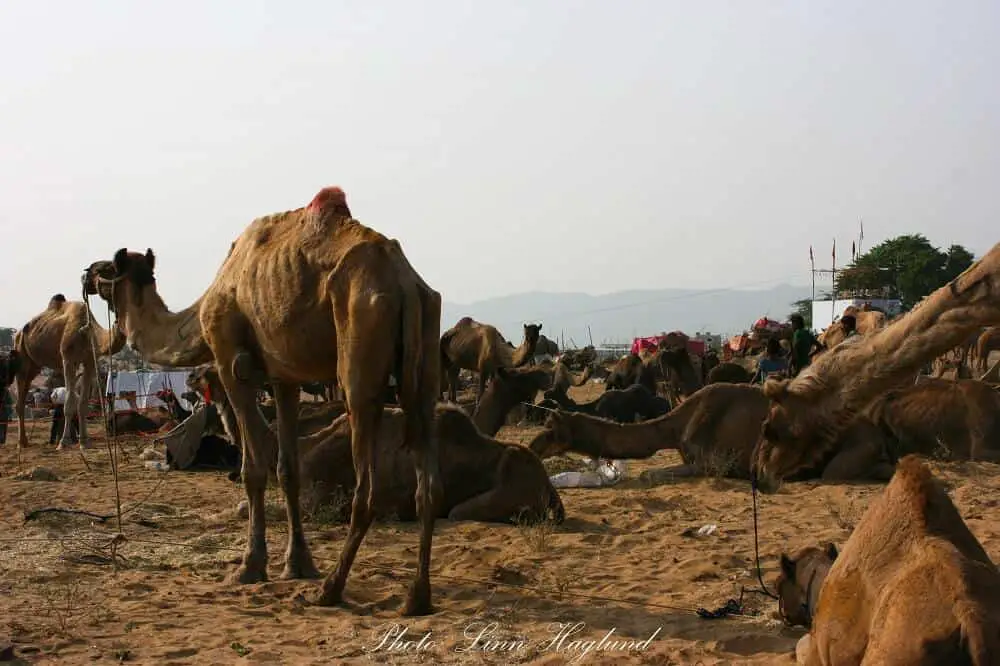
Elephant riding in Thailand
By Taiss from Together To Wherever
On our very first trip to Thailand, one of our “bucket list” activities was to ride elephants in Chiang Mai. I mean, this is not something you can do in the States, so it made us feel like we’d be doing something super exotic that we could show off to our friends and family.
Upon arriving in Chiang Mai, we booked our “tour” with the guest house and couldn’t wait for the experience the next day. When we arrived at the elephant camp, everything looked really nice and the elephants seemed to be in good shape. There were no cages and they were out in “nature” so we thought they had it pretty good. The interaction of feeding them was quite fun. However, once it came to getting on them for the ride, we noticed the trainers hitting the elephants with something that looked like a sharp hammer. This hitting went on through the ride.
To be honest, it wasn’t even fun riding on an elephant. It is pretty scary just thinking of what would happen if you slipped off from way up there. On the ride, all I could think about was how they were getting hit regularly and it twisted my stomach!
Ethical ways to interact with elephants in Thailand
Many months after that incident, I learned of how the elephants are beaten regularly in order to be trained to give tourists rides.
There are elephant care organizations like Mahouts Elephant Foundation that allow visitors to observe the elephants roaming freely in the forest. Additionally, volunteer-led places are likely more favorable since more of the money paid by visitors go to the elephants and not employees.
There are even places that claim to be ethical, but just take elephants from one camp performing for tourists and giving rides to another camp where you feed and bathe them. As you can see, there is a lot to consider when choosing the right place to see elephants in Chiang Mai (and around the world). The best thing visitors can do is not to pay for elephant rides and do a lot of research if they want to see these beautiful creatures.
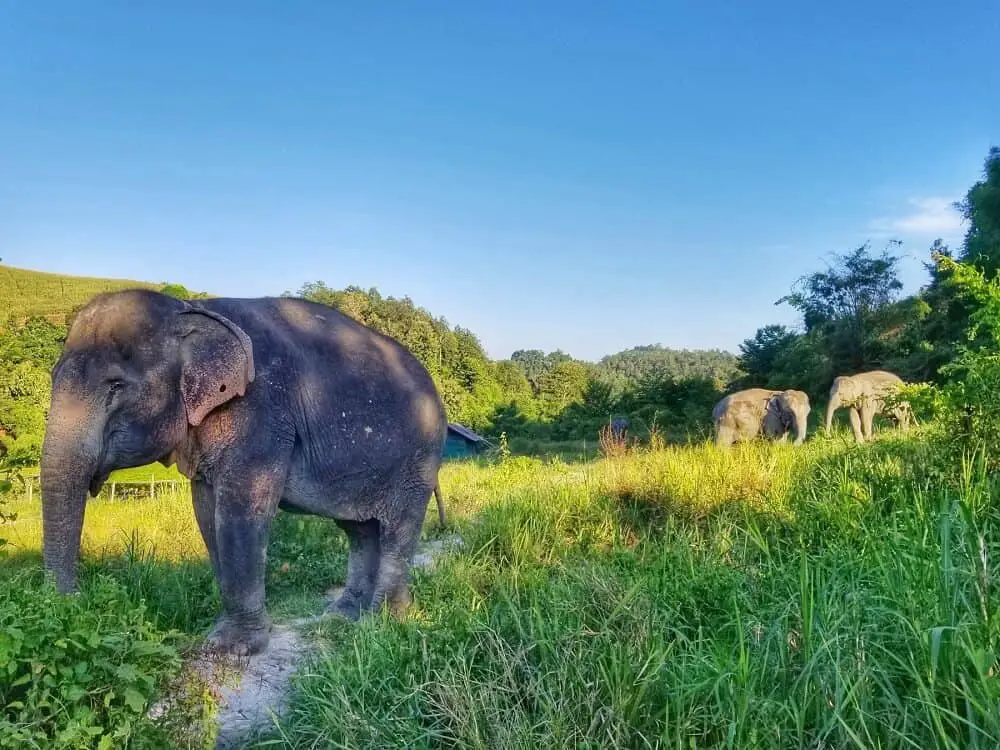
Bathing with elephants causes stress to the animals. Mahouts need to watch the elephants the whole time and they can’t play freely as they could hurt the tourists. Also, the elephants should be able to bathe when they want to and not during tourist hours. That’s why you should never go to a sanctuary that allows bathing with the elephants.
Elephant rides in Jaipur
By Mariellen from Breath Dream Go
Jaipur is one of the great cities of India. With a glorious past, a treasure trove of historical monuments, and an exciting, vibrant present as the capital of Rajasthan, there’s a lot for visitors to love. In fact, Jaipur was recently awarded the status of UNESCO World Heritage city. One of the magnificent gems of Jaipur is Amber Fort – the 16th-century hill-top citadel that’s a few kilometers outside of the city.
Amber Fort is understandably one of the top tourist attractions in Jaipur – I’ve been there several times and it never gets old. On my second trip to Amber Fort, about 10 years ago, I decided to take the elephant ride up the long ramp to the top for the experience. I had never ridden an elephant and just wanted to see what it’s like. Unfortunately, I didn’t take the time to investigate and see if the elephants were in good condition – or even to find out if there was animal cruelty involved.
In the past few years, I have become much more aware of the cruelty behind using elephants, and other animals, for tourism.
There was a global blogging campaign that exposed the cruel practices behind “breaking” elephants so they can be tamed. And the wonderful organization in India Wildlife SOS started a Refuse to Ride campaign to bring awareness to the problems in Jaipur specifically.
Investigations have revealed the Jaipur elephants are in terrible condition, suffering all manner of health problems from blindness to tuberculosis to parasites.
Ethical ways to interact with elephants in India
Nowadays I speak out about animal abuse in tourism and especially about how we should not ride elephants. I wrote a blog post about protecting Indian elephants with some suggestions.
My top suggestion is to visit and support the Wildlife SOS Elephant Conservation and Care Center in India (which is not too far from Agra, so it could be combined with a visit to the Taj Mahal). The Elephant Conservation and Care Center rehabilitate severely abused captive elephants in distress. Here, you watch a presentation and learn all about the center before having a visit with the elephants – and you can even stay and volunteer.
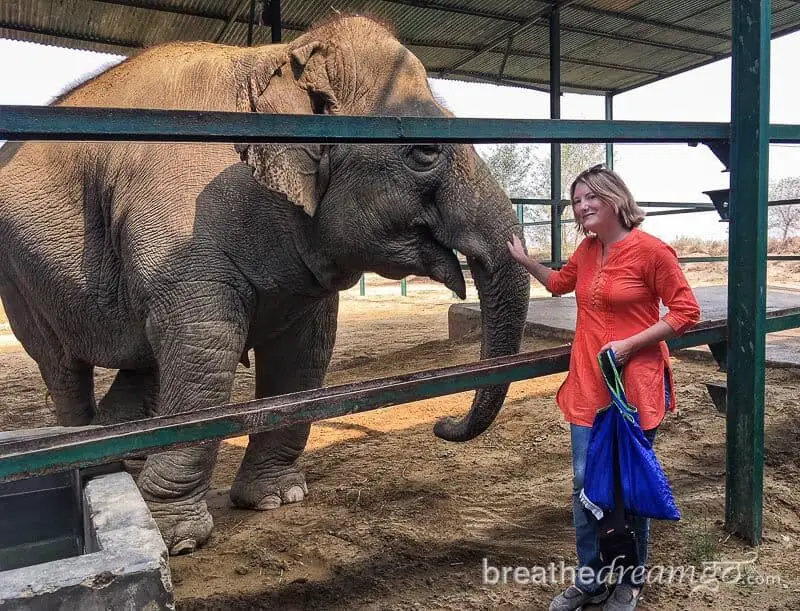
To make the elephants obey humans, they are put through months of torture, beating, starving, no sleep, and no contact with other elephants. Often, baby elephants are taken away from their mothers already when they are only a couple of years old. This is called “The Crush”. The aim is to crush their soul so that they will obey humans and be used for tourism.
Elephant riding in Sri Lanka
By Bradley from The Winged Writer
During a short trip to Sri Lanka, a group of friends and I wanted to arrange a day trip with the hotel we were staying in. The trip itself was quite fun and educational, covering all manner of the Sri Lankan lifestyle; from Tea Factories to Herb gardens, to beaches and the main aspect we had specifically asked for – Elephants!
Unfortunately, we were to find there had been a slight miscommunication between what we had in mind and what the hotel assumed we would enjoy. We arrived at what we thought would be an elephant sanctuary, only to find a single lone elephant chained to a post with a mat on its back.
One girl in our party was outraged and refused to climb onboard and ethically I knew I should have done the same. However, I gave into my caveman desires and rode the elephant along with another girl to a nearby river, where we tried to gain repentance by giving Ranjeet (our uber elephant) a scrub and refreshing river shower.
But no amount of showering washed off my shame that day.
We, the riders, refused to climb onboard Ranjeet for the journey back and my shame was only compounded when I looked into the eyes of the animal that carried infinitely more wisdom and empathy than my own possessed.
I walked away that day with an important lesson; your desire to experience something new does not justify it as right, regardless of how badly you want it.
Ethical ways to experience elephants in Sri Lanka
Go on a safari in Sri Lanka and experience elephants in the wild.
Now, there actually is an elephant sanctuary for orphaned elephants in Sri Lanka, we were just taken to the polar opposite spot. The Elephant Transit Home is dedicated to helping house orphaned elephants. There is no physical interaction with the elephants and hence no abuse for the sake of tourism. You are able to view them from a nearby platform during feeding times before they roam back into the forest.
There is no riding or posing with chained elephants allowed here and tourists will still be able to experience an amazing time with our pachyderm pals within a serene environment and without compromising their morals.
A tip of mine would be that taxi drivers and hotels have a lucrative deal with these elephant riding places, so make sure you very specifically ask to be taken to an elephant sanctuary, even show them the website for the Elephant Transit Home so avoid any mishaps.
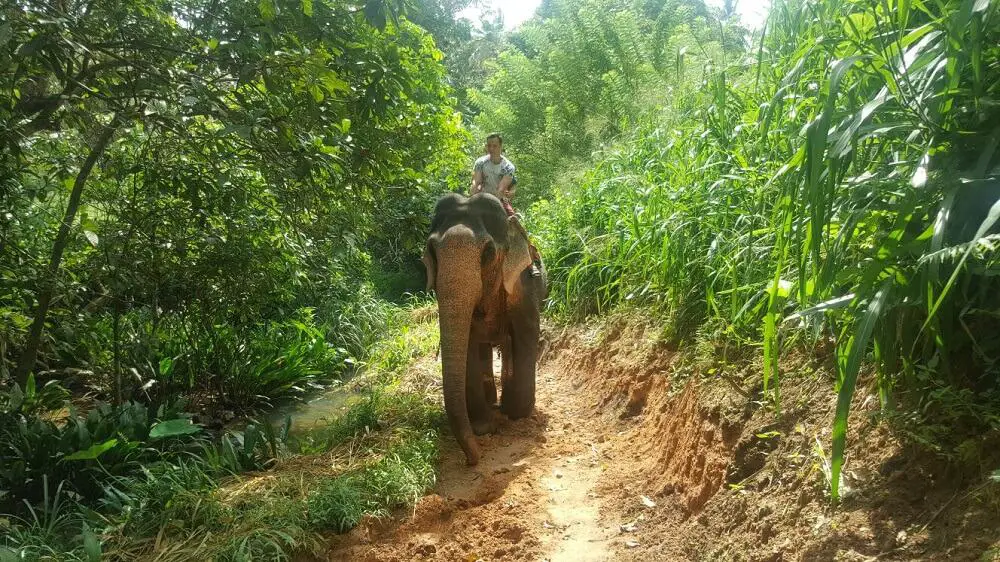
Make sure you do your research before visiting any wildlife sanctuary. Unfortunately, there are many places calling themselves “sanctuaries”, while all they do is greenwashing. Be critical and go somewhere else if you read any dodgy reviews on the place.
Riding yaks in India
By Sapna from My Simple Sojourn
I have traveled to Shimla in India on several occasions. During my last trip, I saw yaks standing on the side of the road going towards Kufri. On my earlier trips, there were no Yaks in Shimla so I was surprised. I asked the yak owners what the purpose of standing by the road was. They informed me that they take tourists for rides on the animals.
When I further asked how they take care of the animals as yaks are not accustomed to the environment of Shimla, they could not give any satisfactory answer.
Yaks are high altitude animals and after visiting Ladakh my understanding increased. This was simply a new attraction due to the increase of tourists in the area.
Ethical ways to interact with yaks
Yaks are high-altitude animals. Their natural habitat is 3,000 meters above sea level and they can climb as high up as 6,000 meters. Yaks have a thick coat and they are very vulnerable to diseases.
So, Shimla which is at an altitude of 2,276 meters is not good for them in terms of environment though the temperature doesn’t go as high as in plains of India.
It is bad for the yaks’ health, as they are not born to live in this environment. Further, they don’t find their natural diet of high-altitude plants. Together, these factors reduce not only the well being but also the life span of the animals.
If you want to experience yaks in an ethical way, it is appropriate to interact with them in the Ladakh region. This is where local nomadic people from centuries rear yaks and they consider the animals as part of their family.
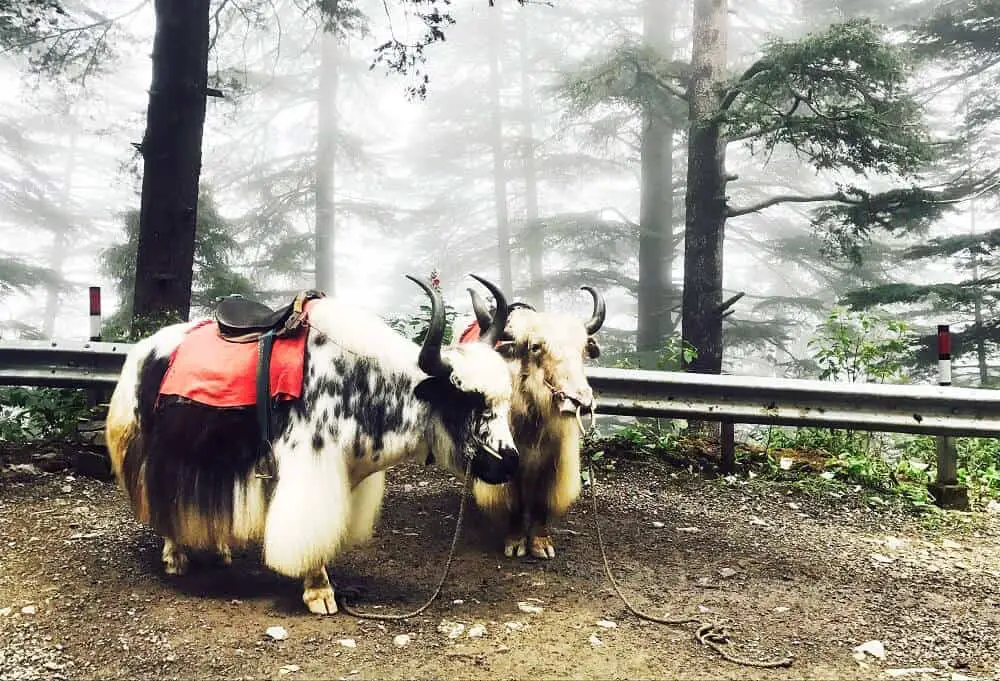
Riding a pony in India
By Shalini from Eager 2 Travel
When I traveled to Vaishno Devi, one of the most famous Hindu pilgrimages of India. I had to cover a distance of 12 km to reach the temple. The terrain was very rough and hard to climb. Therefore, I decided to continue by pony. The cost seemed fair and I was very excited and happy to experience my first pony ride.
The owner of the pony helped me to climb up on the pony. From the moment I got up I had a very odd feeling. Slowly, our journey started. The owner of the pony, Mr. Asad was walking beside me as I rode the pony.
We walked towards the top of the peak. As I sat there, I could see injuries on the pony’s head and I felt really bad. Later on, we stopped to have drinks. I noticed the pony just sitting down and staring at the sky.
That was the moment when I realized how wrong it was of me to sit on this helpless animal, to use him for my benefit.
I felt very bad and I paid the full money to the pony owner. I was filled with so much guilt that I just started walking and reached the top on my own.
The satisfaction that I had while praying in the temple was unmatched. I promised myself that I will never ever take animal rides of any kind again.
Ethical ways to see ponies
It is not ethical to ride ponies but you can find camps and sanctuaries where you can interact with ponies in an ethical way. You can go there and feed them or bathe them. Volunteering at such camps is a great way to know more about them and I am sure it will be very full filling for you instead of riding them.

According to Helpful Horse Hints, a pony should only carry a maximum of 20% of its body weight. Depending on the weight of the pony, it means they should not carry more than 36 to 72 kilos (including harness). High weight on the pony’s back leads to stress on the animal’s back and joints which can lead to injuries.
Conclusion on animal rides for tourism
Altogether, animal rides in tourism are not ethical at all. Even though locals might use the animals in work normally or the animals have been domesticated for centuries, you should be critical.
There are a few things you should consider:
- Is your weight including the harness more than the animal should carry and could it harm the animal?
- Is the animal being used only for the tourist’s amusement?
- Has the animal been through torture to be tamed to accept humans to ride it?
- Is the animal denied the freedom to run, play, interact with others of their species, eat and sleep as much as it would in the wild, and needs in order to be physically and mentally healthy?
If the answer to any of the above is yes or maybe, I would strongly consider a different activity. Luckily, more sustainable tourism destinations around the world are taking animal tourism seriously.
Pin it for later!
